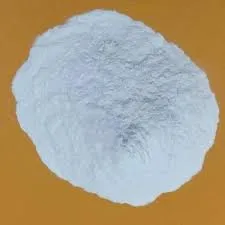
Oct . 12, 2024 21:37 Back to list
what is hpmc used for
What is HPMC Used For?
Hydroxypropyl methylcellulose (HPMC) is a versatile, semi-synthetic polymer widely used in various industries. As a member of the cellulose ether family, HPMC is characterized by its ability to form gels, control viscosity, and serve as a film-forming agent. This unique set of properties makes it indispensable in applications ranging from pharmaceuticals and food production to construction and cosmetics.
1. Pharmaceutical Applications
In the pharmaceutical industry, HPMC is primarily used as an excipient, which is an inactive substance that serves as a vehicle or medium for active ingredients. Its ability to control the release of drugs makes it invaluable for formulating controlled-release medications. By adjusting the degree of substitution and molecular weight of HPMC, formulators can achieve desired release profiles, thus improving patient compliance and therapeutic effectiveness.
Moreover, HPMC is commonly used in the production of capsules, particularly vegetarian capsules as an alternative to traditional gelatine capsules. This makes it an ideal choice for a growing number of consumers seeking plant-based options. In topical formulations, HPMC is used for its thickening properties, enhancing the stability and texture of creams and ointments.
HPMC is also prevalent in the food industry, where it serves various purposes. Its gel-forming abilities allow it to act as a thickener, stabilizer, and emulsifier. For instance, it is commonly found in ice creams, sauces, and dressings, where it helps to improve texture and mouthfeel. Furthermore, HPMC can replace fat in low-fat and reduced-calorie products, making it a popular ingredient in health-conscious options.
In baked products, HPMC contributes to moisture retention and improved shelf-life, allowing for fresher products that last longer on the shelf without compromising taste or quality. Its versatility extends to gluten-free baking, where it aids in mimicking the structure and texture typically provided by gluten-containing ingredients.
what is hpmc used for

3. Construction Industry
In construction, HPMC is used as a vital additive in cement, tile adhesives, and decorative plaster. It enhances workability, improves adhesion, and increases water retention in mortar mixtures, resulting in more durable and efficient building materials. The use of HPMC allows for longer open times, giving workers the flexibility needed for intricate installations without compromising the final quality.
Moreover, HPMC is essential in producing self-leveling compounds, as it ensures an even distribution and leveling by controlling viscosity. As the construction industry moves towards eco-friendlier products, HPMC, being a non-toxic and biodegradable substance, fits this trend perfectly.
4. Cosmetic and Personal Care Products
The cosmetic industry also extensively utilizes HPMC due to its thickening, film-forming, and emulsifying properties. It is commonly found in lotions, creams, shampoos, and other personal care products, where it enhances texture and provides a pleasing sensory experience. HPMC helps to stabilize emulsions, ensuring that oil and water components do not separate, thus improving the shelf-life and efficacy of the formulations.
Additionally, HPMC is included in a range of skincare products aimed at moisture retention and skin smoothness. Its ability to form a protective barrier is beneficial for consumers seeking products that offer hydration without the greasy feel of traditional emollients.
Conclusion
Hydroxypropyl methylcellulose is a multifunctional polymer that finds applications across diverse industries, including pharmaceuticals, food, construction, and cosmetics. Its unique properties, such as gel formation, viscosity control, and film-forming capabilities, enable it to enhance the functionality and quality of various products. As industries continue to adapt to consumer preferences for vegan, natural, and eco-friendly products, the demand for HPMC is expected to grow. This versatility underscores the importance of HPMC as a critical ingredient in modern formulations, serving both user needs and industry advancements.
-
Versatile Hpmc Uses in Different Industries
NewsJun.19,2025
-
Redispersible Powder's Role in Enhancing Durability of Construction Products
NewsJun.19,2025
-
Hydroxyethyl Cellulose Applications Driving Green Industrial Processes
NewsJun.19,2025
-
Exploring Different Redispersible Polymer Powder
NewsJun.19,2025
-
Choosing the Right Mortar Bonding Agent
NewsJun.19,2025
-
Applications and Significance of China Hpmc in Modern Industries
NewsJun.19,2025







